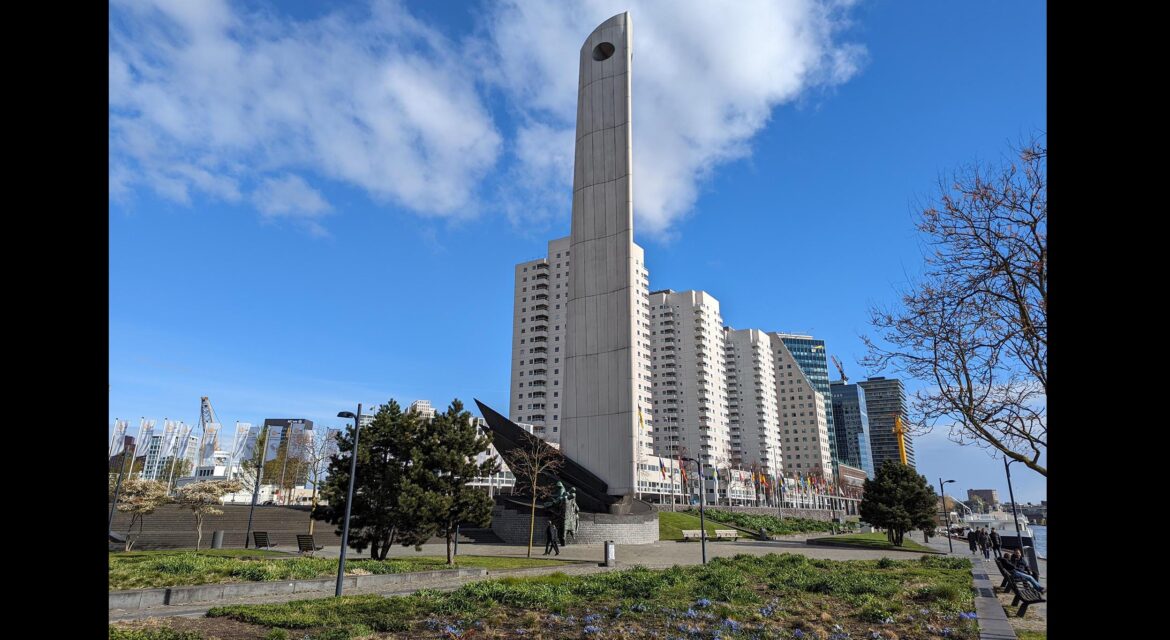 The National Merchant Marine Memorial dominates the Boompjeskade, near the Erasmus Bridge in Rotterdam. Called ‘De Boeg‘ (The Bow) by many in the community, the monument honors all Dutch seamen who died during World War II in a way that physically resonates across the space while also making a major impact on the hearts and minds of audiences.
The National Merchant Marine Memorial dominates the Boompjeskade, near the Erasmus Bridge in Rotterdam. Called ‘De Boeg‘ (The Bow) by many in the community, the monument honors all Dutch seamen who died during World War II in a way that physically resonates across the space while also making a major impact on the hearts and minds of audiences.

Honoring all Dutch Seaman from World War II
 Two years after the conclusion of World War II, members of the Rotterdam maritime industry proposed the creation of a monument that would honor the Dutch sailors who lost their lives in the conflict. The location for the monument, which was to be visible from both the water and the Coolsingel, was chosen in 1949.
Two years after the conclusion of World War II, members of the Rotterdam maritime industry proposed the creation of a monument that would honor the Dutch sailors who lost their lives in the conflict. The location for the monument, which was to be visible from both the water and the Coolsingel, was chosen in 1949.
The 45-meter-high monument depicts the bow of a ship (which is comprised of sculpted grey aluminum plates) cutting through waves (brown stone). Unveiled in 1957, sculptures of sailors were installed in 1965 and are all looking down into the water below. The pieces convey three human traits – remembering loss, overcoming challenges and envisioning a brighter future. The words ‘Zij hielden koers‘ (they stayed the course) are written at the base of the piece.
Located by the Rotterdam harbor, the National Merchant Marine Memorial specifically honors all Dutch seamen who died during World War II but the scale and scope of the piece have ensured that it will resonate with audiences in countless ways over multiple eras.

The Triumph of Liberation
 Symbolizing the triumph of liberation that the Dutch enabled and experienced to help end World War II, the National Merchant Marine Memorial was built at a monumental scale to provide inspiration and hope to all audiences. Doing so has allowed it to become an essential element of the community and nation in ways that continue to benefit each.
Symbolizing the triumph of liberation that the Dutch enabled and experienced to help end World War II, the National Merchant Marine Memorial was built at a monumental scale to provide inspiration and hope to all audiences. Doing so has allowed it to become an essential element of the community and nation in ways that continue to benefit each.

